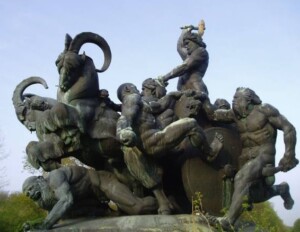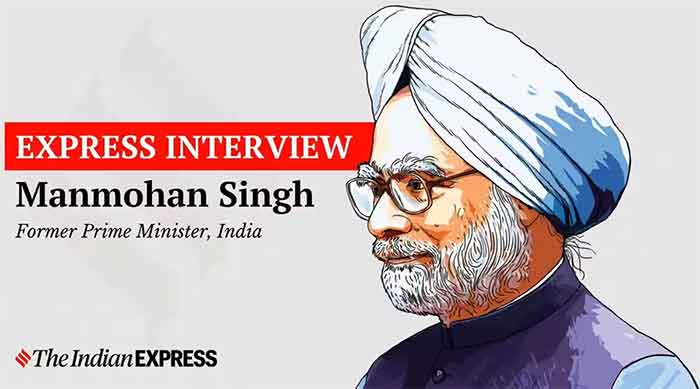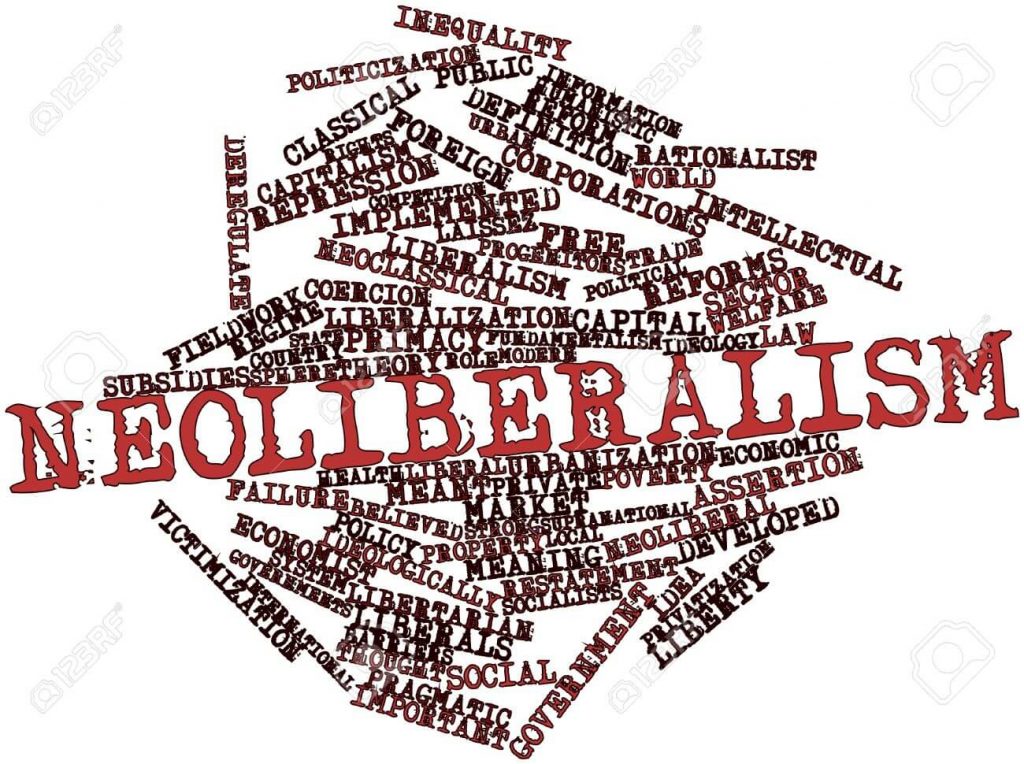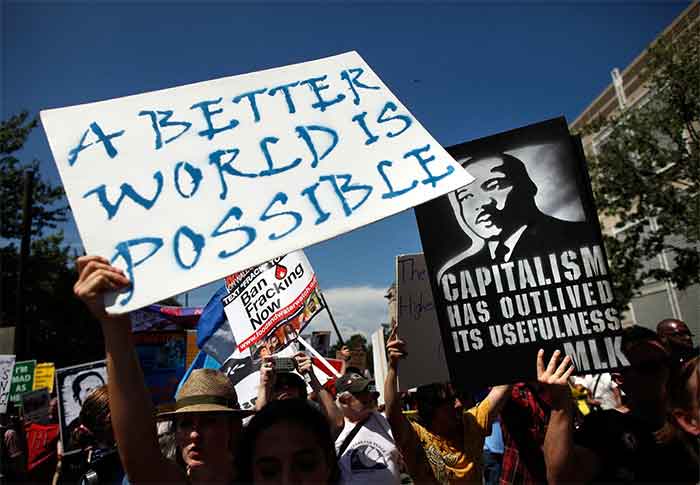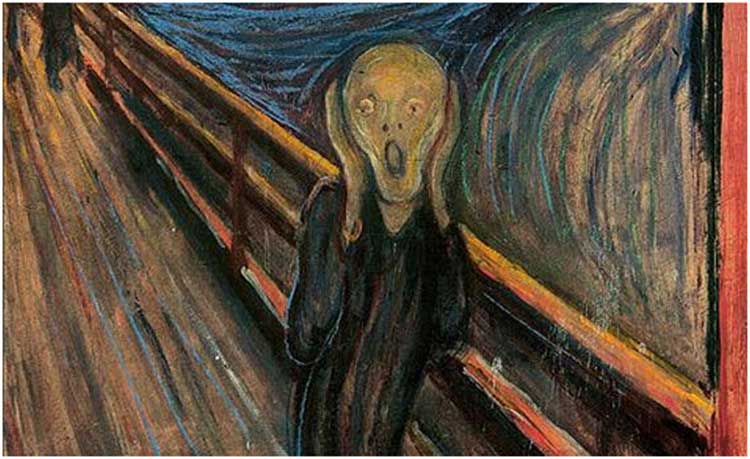
Orientation
In Part I of this article, I begin by grounding neoliberal psychology in the political and economic reality of neoliberalism between 1970 to 2020. First, we discussed the historical origins of neoliberalism, and then its economic exploitation, mystification and ideological use to control people. I briefly discussed the realities of the practice of neoliberal economic policies which has resulted in cannibalization of the infrastructure. Further, I show thirteen instances in which neoliberalism shows its class bias. Neoliberalism is an ideology because the upper and upper middle classes of society do not use neoliberalist economic policies on its own class. It is only applied to neoliberal practices when it comes to middle-class, working-class and the poor who experience this cannibalization.
In practice, neoliberalism strips the individual of his social, qualitative, historical and cross-cultural connections so that all social life can be reduced to a quantitative, measured and calculating cost-benefit analysis. Everything is saleable and reduced to a price. At a micro level, neoliberal psychological realism results in what is called the “entrepreneur self”. This entrepreneurial self is manifested in at least five areas in which neoliberal psychological realism takes place:
- in the thinking processes of the working class;
- in the commercialization of child development;
- in the relationship between Barbie-doll toys and the obsession with being thin;
- in hookup sex;
- in the preoccupation with living in the present through its ideological use of “mindfulness” psychology.
In this Part II article, I discuss two forms of romantic resistance to neoliberal psychological realism: humanistic psychology and the human potential movement on the one hand, and New Age spirituality on the other.
To counter the entrepreneurial self of realist psychology, romantic psychology develops an “expressive” self that was the result of the work of Maslow, Rogers, Fritz Perls and Arthur Janov. This expressive self peaked in the late 1960s and early 1970s. The other kind of romantic psychology is in cultivating what I call a “mystical self” as embodied in the work of Carl Jung, Mircea Eliade and Joseph Campbell. This “spiritual psychology” peaked in the early 1980’s and continued to cultivate followers at least well through the 1990’s.
In the next few pages, I will review selectively some features of romantic neoliberal psychology as they relate to the humanistic psychological construction of an expressive self. Please see Table A for a deeper comparison between the entrepreneurial self of Part I and the expressive self.
The human potential movement early years: New Deal liberalism
Abraham Maslow
The seeds of romantic psychology began in the United States, not in the 1960s, but decades before. Maslow was very influenced by the anthropological, cultural relativist work of Ruth Benedict and Margaret Mead. Both anthropologists challenged the progressive theory of cultural evolution. They were extremely sympathetic to tribal societies and each championed what they thought were their liberating sexual practices. (This anticipated the sexual revolution of the 1970s). The neoliberal political and economic movement began with the Freiburg Circle in the 1930s at roughly the same time. Abraham Maslow began his optimistic quest to rescue psychology from the clutches of what he felt was the pessimism and determinism of Freudians and behaviorists. Maslow first mentioned his famous “peak experiences” as far back at 1946. According to Joyce Milton (The Road to Malpsychia), Maslow was a New Deal Liberal, and as late as 1960, Maslow maintained a respect for Marx. Among his most enthusiastic students was Abbie Hoffman who switched his major to psychology and took every class Maslow offered.
Carl Rogers
Parallel to Maslow, Carl Rogers, another humanistic psychology heavyweight, began studying at a liberal theological seminar in NYC in 1924. Five years later he worked for twelve years on the front lines of counseling, working with problem teenagers and abused children as a staff psychologist in Rochester, New York for the Society for the Prevention of Cruelty to Children. He developed a following among social workers and pastors.
In the early 1960s, Rogers published On Becoming a Person which outlined his version of Maslow’s self-actualization. Increasingly, Rogers was critical of most institutional authority including psychiatrists, and this translated into how he did therapy in the 1960s and 1970s. Rogers did his best to level the playing field, insisting that a person’s emotions and personal experience were the most important guides to health. Rogers became a champion of self-directed therapy in which the client determined the goals, processes and when they ended therapy.
Esalen Institute
The home of the human potential movements in the 1960s and 1970s was Esalen, located in Big Sur, California. The two co-founders, Richard Price and Michael Murphy had different ideas about where Esalen was going. Michael Murphey identified more with a mystical tradition, having studied with Sri Aurobindo in India. Richard Price was more sympathetic to the experiential, drug-taking wing of Esalen. Throughout most of the 1960s, Esalen was closer to what Murphy wanted. This changed in the latter part of the 1960s with the wave of LSD use on a mass level and the growth of a counterculture.
Shift to romantic neoliberal psychology
By the early 1970s Esalen had moved from a more moderate, discipled approach to a drug-using, “winging it“ orientation. There was a willingness, and in fact an expectation by group leaders that people experiment with LSD. Fasting, trance states rebirth rituals, dream work, social nudity and group dancing were par for the course. Sexual encounters within group sessions were common.
The cathartic theory of the emotions
The foundation for virtually all humanistic psychology was the cathartic theory of the emotions. However, the venting approach to the emotions did not originate with therapists. It has roots in the Greek concept that audiences watching a stage play and emoting along with the story serves a cathartic purpose. Aristotle felt that viewing a tragic drama would allow catharsis to occur for the audience, draining off pity and fear. According to Joyce Milton, the cathartic method as a mental practice within the field of medicine was introduced in 1877 by Josef Breuer, perhaps best known for his theory of hysteria and his use of hypnosis. Later these ideas were taken up by Freud. In the hands of humanistic psychologists, the cathartic theory states that emotions are like steam under pressure. If not released they will explode. Emotional ventilation is supposed to relieve inner frustrations.
This theory was carried on in groups with Will Schutz’s encounter groups and Fritz Perl’s Gestalt groups. Therapists taught people to scream, beat pillows and confront each other. This also occurred in individual therapy with Janov’s Primal Scream therapy along with a spinoff group, “Center for Feeling Therapy.”
Group cathartic theory: Will Schutz and Fritz Perls
Social psychologist Will Schutz helped to transfer relatively tame “sensitivity groups” in the 1950s to the dramatic encounter groups that began in the mid-sixties.
Schutz conducted the groups as marathon weekend-long events in which sleep deprivation eroded inhibitions. After 24 hours without sleep, open and honest expression as well as actual tears, seemed to flow more easily. (Encountering America, p 195)
Fritz Perls was trained as a psychiatrist and Reichian therapist and led his first encounter groups in the mid 60s: Jessica Grogan tells us:
In contrast to traditional encounter groups that relied on the self-direction of the group, Perls held the reins in his groups. He utilized the concept of the “hot seat,” a position in which the seated individual received his full attention. Another empty chair was set beside the seated individual and served as an object of projection (it became the victim’s mother or father).
Perls then proceeded in the words of one Esalen historian to take the person apart by noticing and commenting on every defense mechanism, every body posture, every quiver of voice or eyes. Instead of allowing group members to interact with the hot-seated individual, Perls assumed full control while the group watched on in silence, and often, awe. After a brutal dissection of his subjects, Perls measured his success in tears. He then attempted to re-integrate the fractured person in order to create all new gestalt or whole person (Encountering America, p197)
Arthur Janov and the Center for Feeling Therapy
About the same time humanistic psychology was “letting it all hang out” at Esalen, in Los Angeles, Arthur Janov was developing what he called “primal therapy”. According to Janov, almost all of people’s problems centered around their parents not giving them the right amount of attention. The way Janov took his clients back in time to the original parental deprivation was a three-week isolation regimen with no external stimulation. When alone and not in therapy sessions the client was not to smoke, drink alcohol or coffee, watch TV, listen to the radio or talk on the phone. They were now raw enough to be taken back to the primal scene. As they got closer, they screamed more and more at their imagined parents. The idea was that once you got the screaming “out of your system” it was possible to begin living a full life instead of through muffled anger at parents.
In early 1979 A spin-off of Janov’s emerged, the Center for Feeling Therapy. They followed Janov’s method of having the new client stay in a secluded motel room alone for three weeks. A new client of the center met with a therapist in marathon three to seven-hour individual sessions during which the person was attacked and criticized. Over the next 10 years, the center grew very successful. There were 350 patients living near one another and sharing homes. As often happens in cults, the demands of the therapists grew more bizarre and at the end all twelve therapists associated with the center lost or surrendered their licenses.
The problem with the construction of a romantic, expressive self is not just that the therapists had no scientific basis for the cathartic theory of the emotions, but that they stirred people up on marathon weekends but offered no structure for them to integrate all of what was stirred up after the weekends were over. Several suicides at Esalen in 1968-1969 served as painful indications of the Esalen staff’s inability to provide comprehensive services for the mess they had created. For more on the dark side of the human potential movements, see Singer and Lalich’s book, Crazy Therapies.
The sun sets on the romantic expressive self
The numbers of those involved in the counterculture during the 1967 Summer of Love was no more than 100,000 people. But by the early to mid-1970s “flower power” had become mainstream and hippiedom had arrived. As the counterculture became a more mainstream phenomenon, psychology found a new life in self-help books. From 1972 to 1979, self-help books mushroomed across bookstore shelves, but many were written by authors untrained in psychology. Nevertheless, as in any large bookstore, the psychology section contains at least 10 shelves of self-help books for every shelf of books that attempted to uphold some scholarly standard. Many self-help books actually disparaged psychotherapy directly.
By the mid-1970s, the humanistic movement seemed more self-indulgent rather than awakening a higher and deeper self. After 1975, Association for Humanistic Psychology – AHP – participation began to decline. In 1976 and 1977, the annual conference attracted about 2,000 participants. By 1980 that number was 1,000. Literary critics turned on the field and John Updike wrote that the American ride had run out of gas. The expressive self was withering on the vine.
Neoliberal Romantic Spiritual Psychology: The Mystical Self
In the early 1970s, feminist women’s spirituality was in crisis. On one hand, women fought for more inclusion within Protestant, Catholic and Jewish religious institutions. But for other women, all the world religions were patriarchal. They were drawn to pagan and neo-pagan traditions. Many joined already existing magical groups that centered on people like Aleister Crowley and the Golden Dawn, while others like Starhawk started wiccan groups from scratch. At the heart of this movement were goddesses and gods and their mythology. Psychologically, all these groups were more or less influenced (whether they knew it or not) by the psychologist Carl Jung, the historian of religion, Mircea Eliade and the mythologist Joseph Campbell.
Commonalities between Jung, Eliade and Campbell
All three were anti-modern, rejecting science and materialism. Their idealistic past was either the medieval world (Jung), 19th century Romanian peasant culture (Eliade), or the early American West, including Native Americans (Campbell). Jung and Eliade rejected democracy and flirted with fascism. Campbell dissociated himself from the 60’s anti-war and civil rights movements. He was not sympathetic to minorities, feminists or toward liberal social programs. Campbell once said he would flunk any student who took part in political activism. All three were anti-communist.
All three mythologists developed a following in the United States. Why? On one hand, their theories went with the emerging anticommunism of the 1950s. On the other hand, they also corresponded to the growing uneasiness of the American middle classes and what they feared was too materialistic a way of life.
All three mythologists were, in different ways, hostile to Judeo-Christian religions, all of which they believed were complicit in modernist problems. Modern religions denied the importance of spiritual experience and were marred in superstitious rituals and material wealth. For all three, mythological stories are really about solutions to common human problems that have been lost, marginalized or demonized by traditional religion. All three mythologists were followers of a spiritual gnostic tradition which says there is a hidden spiritual knowledge that the ancients were aware of, but which has been lost, thanks to modernity. This gnostic tradition teaches that the material world is not reformable and it is better to withdraw from it in order to perfect oneself.
Though Jungian spirituality is eclectically Western, it is fair to say that Jung admired what he imagined to be pre-Christian German paganism. If James Hillman is any indicator, Jungian psychology is a modern version of the archetypal, polytheistic psychology of the Renaissance. The roots of Eliade’s religious beliefs are Hindu’s Vedanta tradition of yoga. According to Robert Ellwood, Campbell flirted with Hindu traditions but ultimately settled on the pagan traditions in the west, from Homer to the Holy Grail.
Carl Gustav Jung and Wotan’s Return
Collective unconscious
In The Politics of Myth, Robert Ellwood tells us that after his break with Freud in 1913, Jung underwent a spiritual crisis and came out of it with an array of archetypes drawn from pagan sun-worshiping volkish mysticism to which he later added other western esoteric traditions such as alchemy. Jung took Freud’s personal unconscious and collectivized it, arguing that nations and races each had a collective unconscious which could be tapped through their mythology and ritual. Jung thought that levels of the unconscious lay like geological strata in the psyche. Mythology was to culture what dreams were to the individual.
In the modern world, the collective unconscious was repressed because modern religion has lost its ancient roots in mythology and ritual. Modern masses are alienated and lack the symbols, myth and rituals that would ground collective psychic energy and provide integration. Jung followed Ortega y Gasset in claiming that modern humans isolate socially from others, while also separating from their unconsciousness and instincts. To be fair to Jung, given this pessimism towards modernity, it is understandable that he flirted with the Nazi movement. Because of their rootlessness, modern humanity’s collective unconscious had more power and can be easily distorted into a monstrous hybrid which results in the worst of tribalism and modernism (Nazism). Jung realized this later.
Mircea Eliade and nostalgia for the sacred
Rejection of secularism
Eliade fled Romania after it became a satellite of the Soviet Union in 1945. In the same year, he taught at the Sorbonne in Paris and then, starting in 1956, at the University of Chicago. In these roles he become the most important historian of religion of his time. Eliade radically and systematically rejected the very epistemological and ontological foundations of the modern secular world. He thought the object of the study of religion was beyond historical analysis. For Eliade, ordinary means of knowledge and experience are not only flawed but are a “Veil of Maya” over our knowledge of reality. He saw himself as caretaker of spirituality against the assault of secularism. Why should he not try to engineer a religious destruction of the confidence in secular consciousness?
Eliade seemed to hold a degenerate theory of the history of religions. Rather than primitive societies consisting of backward, superstitious people, Eliade was all for Frazer’s description of bloody sacrifices, drunken banquets and carnivalesque masquerades as sacred activities. Like Dumezil and other “order” theorists, Eliade felt that historical consciousness and modernity was a catastrophe for humanity’s sense of the sacred.
Sacred space and time
The arena of sacred time is myth, not history. Eliade believed that to live in historical time and place was to live under fallen conditions. Mystical experience was to live beyond history and place. Myth tells us of the eternal time of origins. Sacred space is the location in which myths are enacted. The world’s spiritual sites have common properties – they are perceived to be the navel, or center, of the world. This center is the cosmic tree where the perpetual regenerations of the world take place. Thus mandalas, mazes or labyrinths of medieval Christianity helps us to experience this center.
Joseph Campbell and the New Quest for the Holy Grail
The life of Campbell
According to Ellwood, Joseph Campbell was the best known of all interpreters of myth for late 20th century Americans due to his lively and highly readable books, grand lecture hall performances and PBS appearances with Bill Moyers. He was born in 1904 to Irish-American parents and both his grandfathers arrived in the US as poor immigrants who escaped the Irish potato famine. Joseph’s father was a successful salesman who rose his family to upper-middle classes status which exposed Joseph to the arts and cultures of the world, allowing him to attend concerts, plays and museums. After being taken by his father to Buffalo Bill’s Wild West show, he cultivated a strong interest in American Indians.
Spiritual influences
Through Thomas Mann, Campbell met Indologist Heinrich Zimmer. When Zimmer died in 1943, Campbell received the responsibility of editing Zimmer’s manuscripts. The Zimmer connection enabled Campbell to become attached to the famous Eranos conferences which included scholars like Eliade, Gershom Scholem who had revived the study of Jewish Kabbalah, Henry Corbin of Iranian mysticism, as well Jung. Campbell became a major figure in the world mythology with the publication in 1949 of The Hero with a Thousand Faces.
Despite his flirtation with Indian religion, a trip he made to India made him think twice because of the poverty and the disease he witnessed. In the end, he turned westward. Besides Native Americans, Campbell was drawn to Homer’s Odyssey and stories of the search for the Holy Grail. From 1959 through 1968 he wrote a great four-volume world mythology.
According to Campbell there are four functions of myth:
- a mystical experience to awaken and maintain a sense of awe and gratitude;
- an image of the universe in accord with the knowledge of the time (in the sciences);
- implementation of a moral order;
- to give an account stage by stage through life.
20th century myths: individualism in space: Star Wars
In the application of myths to today, Campbell was no reactionary. He proposed the place for myths to play themselves out today was in Outer Space. This is our mythology in a way that is comparable to the role of Arthurian fantasy in Victorian England and Wagner’s heroes in Wilhelmine Germany.
Ellwood makes a very interesting comparison between Star Trek and Star Wars as a way to demonstrate Campbell’s individualistic roots. Star Trek was about cooperation between the crew, not the individual. It isn’t even about the patriotism of say, the United States. The crew members included people of many ethnicities. It was about humanity in space. In these episodes there was a direct struggle for power between humanity and extra-terrestrial civilizations. In the case of Star Wars, the theme was about the individual heroism of Luke Skywalker. In Star Wars, Arthurian legend and Wagnerian cycles of myths all show the ultimate futility of grasping for power.
Politically this has conservative implications. How convenient this is to encourage people to withdraw from political power and engagements into the private world of mythological journeys. What kind of society would Campbell’s view of myth construct? Most likely a society of heroes like the characters of Star Wars who follow their own myths. Meanwhile a ground-crew of non-heroes (the working class) sing about heroes and the songs that keep the social order together. It is ironic that in spite of his conservative politics, he was extremely popular at Esalen.
The mystical self as the playground of the upper classes
What kind of Americans were drawn to Jung, Eliade and Campbell?
Interestingly the publisher of both Campbell and Jung’s work, Bollington, was owned by Paul Mellon, related to Andrew Mellon who was one of the wealthiest men of that time. Given the conservative tendencies of Jung and Campbell, it is not surprising that they found so much money to “spread their word” at a time of rabid anti-communism in the fifties, and as a reaction to the liberal and radical sixties with its expressive self.
Overwhelmingly, those drawn to Jung, Eliade and Campbell are upper middle-class and upper-class wealthy people – doctors, lawyers, architects and ministers from the upper middle-class as well as the independently wealthy. They are people who laid low during the 1960s and 1970s and then stepped forward into the vacuum left by the human potential movement. They became the upper-class version of the swing to the right-wing politics. This was happening at the same time when the lower classes were gravitating towards a right-wing fundamentalism in the churches of the South.
The place and misplace of romantic self
As I said at the beginning of Part I, romantic emotional and spiritualist selves are two different answers to the experience of feeling trapped by neoliberal modern social conditions and realist psychology. Their proposals are either to flee from all social relations (expressive self of the human potential movement) or to search for a premodern social life based on an organic community. Their reaction is either for the individual:
- to detach from society and rebel emotionally, or;
- to reject the associative, social contract relations of modern life, not by denying our social identity as the expressives do, but to dissolve into pre-modern social life as in the Middle Ages or into pre-Christian paganism.
Please see Table B for a more exhaustive comparison between the expressive and mystical selves.

